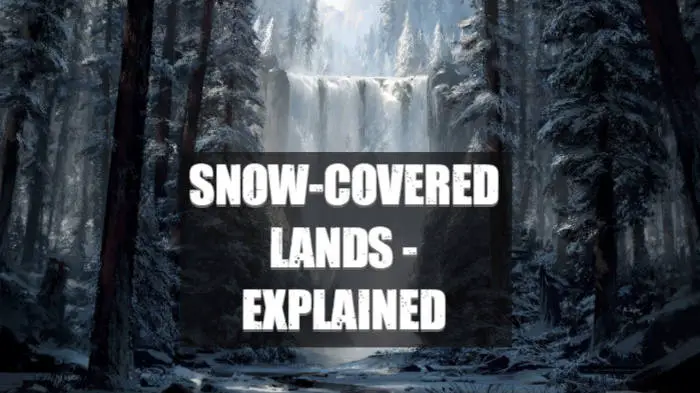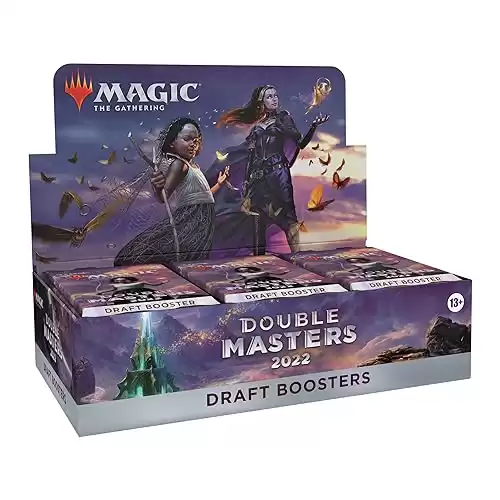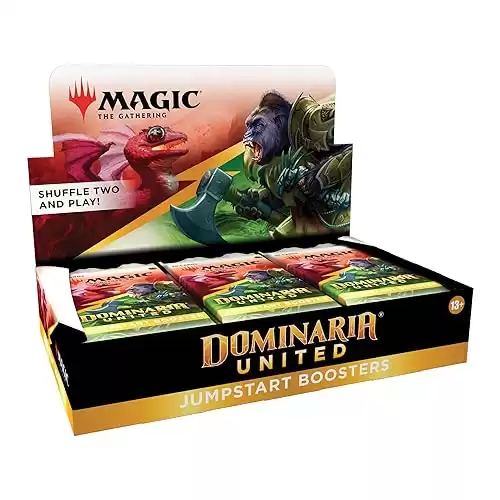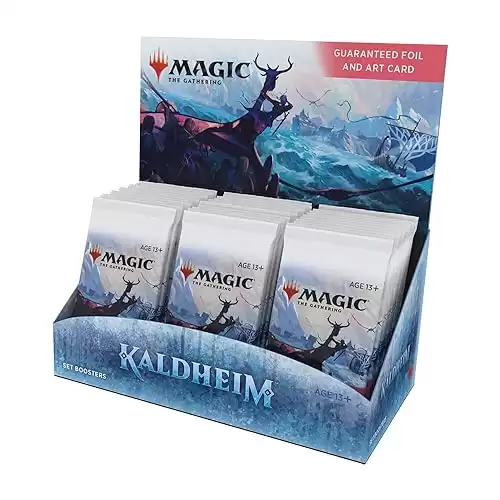Lands are a crucial but often overlooked part of your deck. It’s important to build a consistent mana base, but your lands don’t often play a part in your overall strategy. If you’re running snow-covered lands, though, they’ll often be a key part of your deck’s engine.
For the most part, whether or not your lands are snow-covered won’t make any difference in gameplay. Most snow lands still produce mana, so you can use them to cast your spells just as you would with any other land. There are some cards, however, that specifically care about snow. Their effects might depend on how many snow permanents you control, or they might require mana from a snow card. In strategies built around this supertype, you’ll want to make sure most, if not all, of your lands are snow lands.
If you’ve never seen snow lands in action, you might still be curious about what exactly makes them so special. You might even wonder why they exist at all, or what their impact is on Magic as a whole. I’ll be answering a flurry of questions relating to snow lands, as well as going over the history and strategy of this unique supertype.
| Pros | Cons |
| Free synergy in gameplay | Occasional hate cards |
| Lets you bluff | Can lessen self-expression |
Table Of Contents:
- What Are Snow-Covered Lands?
- How Do Snow-Covered Lands Work?
- Snow-Covered Lands – FAQ
- Pros And Cons
- End Step
What Are Snow-Covered Lands?
Before we get into the details, you should know that a snow card doesn’t have any special rules or inherent differences from non-snow cards. Snow is just a supertype that other cards can reference. It can appear on any card type, including lands.
There are only five lands that are actually called ‘snow-covered’: one for each basic land type.
Other than their use for snow synergies, these lands work exactly the same as regular basics. They enter the battlefield untapped, and they still only add one color of mana. Effects that search for basic lands, like Rampant Growth, can find them because they still have the basic type. The only differences between these and typical basics are that they have a different name and the snow supertype.
RELATED: The Best Lands in MTG: A Complete Guide
However, Magic does have other snow lands. These don’t have ‘snow-covered’ in the name, but they work well in decks built around this chilly supertype. Most of them are simple dual lands, such as Rimewood Falls, but others have more interesting effects. Dark Depths, for example, is one of the few lands in MTG that doesn’t tap for mana!

It’s also worth noting that some old cards refer to snow-covered lands in their original text. Since snow-covered isn’t a type, the oracle text of these cards now refers to snow lands.
As an example, If you attacked with Legions of Lim-Dul and your opponent controlled a Snowfield Sinkhole, your creature would be unblockable because it has snow swampwalk.
How Do Snow-Covered Lands Work?
Now that you have a better idea of what exactly snow lands are, you might have questions about how they function during gameplay. After all, what are the snow synergies I’ve been referring to? And are there any other differences you should know about?
Does Snow Mana Exist?
There are two ways in which snow synergies appear during gameplay. The first is simple to understand: some cards just care about how many snow cards you control. Skred, for instance, is a removal spell that deals more damage if you have lots of snow permanents. In a deck running Skred, it’s worth including snow-covered lands just to deal more damage.
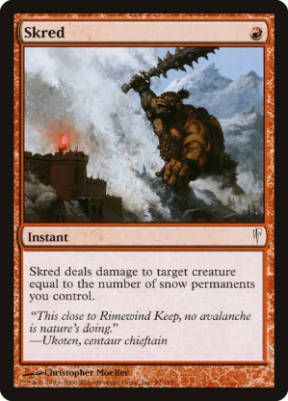
The second type of synergy is a bit trickier. Some cards, like Frostpeak Yeti, have a snow mana symbol that looks like a snowflake. This symbol indicates that you need to pay a cost using mana from a snow source. That could be from a snow land, or a mana dork like Boreal Druid. As long as the mana came from a snow card, you can use it to pay this cost.
107.4h When used in a cost, the snow mana symbol {S} represents a cost that can be paid with one mana of any type produced by a snow source (see rule 106.3).
MTG Wiki
Snow mana is not the sixth color of mana, nor is it a new type. A Snow-Covered Forest still makes green mana, for instance, but you can use that mana to pay for a snow mana symbol.
In Draft
One of the biggest differences between normal basics and snow-covered basics comes from outside the game.
During a draft, you get to add as many basic lands to your deck as you want. In some drafts, you might even take the basic land out of the pack. However, the same isn’t true for sets with snow. If you’re drafting a set that has snow cards, you can only use the snow-covered lands that you pick. They stay in the pack, and you can draft them just like any other card.
RELATED: How to Draft MTG: The Complete Guide
Snow lands are often high-priority picks in draft. After all, you need these lands if you’re building around snow synergies, and there’s a finite number of them at the table. Each pack will still only have one land in it, so there will only be three snow lands per person. Taking enough snow lands is key to making sure your deck works as intended.
Snow-Covered Lands – FAQ
We’ve gone over what snow lands are and what makes them different from regular lands, but you might still have more questions. After all, basic lands are a fundamental part of Magic, so makes sense to be curious about what makes new ones so special. Snow-covered lands have a long history in MTG, so let’s take a closer look.

When Did Snow-Covered Lands First Appear?
Snow lands made their debut in Ice Age, which was released in June 1995. It was the sixth expansion of Magic, and snow lands have since appeared in the following sets:
- Coldsnap (2006)
- Modern Horizons (2019)
- Kaldheim (2021)
How Many Snow Lands Are There?
There are 26 unique snow lands in Magic, not including the rebalanced, Arena-only version of Faceless Haven. In addition to the five snow-covered basics, the following lands also have the snow supertype.
| Name | Colors of mana | Set |
| Alpine Meadow | W/R | Kaldheim |
| Arctic Flats | W/G | Coldsnap |
| Arctic Treeline | W/G | Kaldheim |
| Boreal Shelf | W/U | Coldsnap |
| Dark Depths | n/a | Coldsnap |
| Faceless Haven | C | Kaldheim |
| Frost Marsh | U/B | Coldsnap |
| Frostwalk Bastion | C | Modern Horizons |
| Glacial Floodplain | W/U | Kaldheim |
| Highland Forest | R/G | Kaldheim |
| Highland Weald | R/G | Coldsnap |
| Ice Tunnel | U/B | Kaldheim |
| Mouth of Ronom | C | Coldsnap |
| Rimewood Falls | U/G | Kaldheim |
| Scrying Sheets | C | Coldsnap |
| Shimmerdrift Vale | Any | Kaldheim |
| Snowfield Sinkhole | W/B | Kaldheim |
| Sulfurous Mire | B/R | Kaldheim |
| Tresserhorn Sinks | B/R | Coldsnap |
| Volatile Fjord | U/R | Kaldheim |
| Woodland Chasm | B/G | Kaldheim |
What Formats Are Snow-Covered Lands Legal in?
Snow-covered lands are currently legal in every format, but not for long.
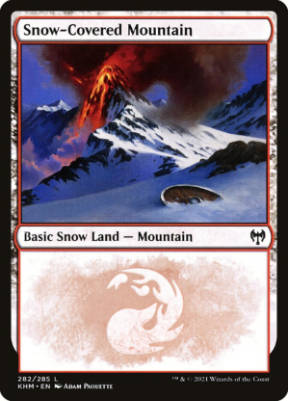
On September 9th, 2022, Kaldheim will no longer be legal in Standard. No other premier set currently contains snow lands, so it’s likely that they’ll disappear from the format.
Why Do People Play Snow-Covered Lands?
The main reason that people play these lands is simple: they’re a key part any snow deck. Without a critical mass of snow permanents, or snow mana sources to power your spells and abilities, these decks would fall short compared to other strategies.
However, you may have guessed that there’s a second reason why people might play snow lands. Since they work like any other lands, you can run them without losing any consistency or synergy.
In fact, you could argue that you’re giving your opponents free information by playing regular lands. It’s unlikely that a deck without snow lands would run any cards that care about this supertype. If you play a non-snow basic, your opponent knows right away that they don’t have to play around snow cards.
If you choose to run snow lands, though, that doesn’t mean you have any cards that care about them. After all, a Snow-Covered Swamp works exactly like a Swamp, so you don’t lose anything by playing the snow version. In fact, you can trick your opponent into playing around snow cards that aren’t even in your deck.
While some players enjoy using snow lands to bluff, or for one minor synergy, most players still just use typical basics. After all, Magic is also a game of self-expression. With hundreds of different artworks to choose from, personalizing your lands can be a statement about who you are and what you love about MTG. Some players don’t like limiting themselves to the few snow-covered lands that have been printed.
Thankfully, there is a reason not to play snow lands. Hate cards such as Reidane, God of the Worthy specifically target snow cards, and it feels awful to get caught by these if you don’t need snow.
Why Are Snow-Covered Lands So Expensive?
These lands won’t cost you a fortune, but they’re certainly more expensive than typical basics.
Since there have only been four sets with snow lands, there’s naturally just a smaller supply in the world. You also need these lands if you’re building a snow deck, so there’s more demand for these lands than a random basic.
Still, these lands are much more affordable nowadays. After Kaldheim, a large volume of snow lands entered the market. You might have to pay more for these than a typical mana base, but even players on a budget can put together a reasonably priced snow deck.
Pros And Cons
Of course, knowing every detail and ruling around snow lands doesn’t mean much if they aren’t worth playing. So what are the potential benefits and risks to running snow lands?
Pros
First, getting extra value from your lands feels fantastic. There’s no cost to playing snow-covered lands, so any bonus you get from them is basically free. In some ways, snow is a lot like landfall: it rewards you just for playing the game.
As I’ve already mentioned, you also get to bluff with snow lands. Even if none of your cards care about snow, you can still represent these cards just by playing lands. If you like playing mind games with your opponent, there’s little cost to playing snow lands.
Lastly, building a whole deck around arctic creatures and icy magic is just plain cool. Some players may not care much for theme, but it’s a huge part of the game for others. Snow decks have synergy, flavor, and gorgeous winter art all at once.
Cons
Of course, there are some downsides to running snow lands. First and foremost, some cards like Reidane, God of the Worthy are designed to counter this strategy. However, these cards are often too niche to see widespread play. There’s always a chance you could run into hate cards, though, especially if snow decks are a mainstay in the current meta.
Also, some players may not like feeling like they “should” play snow lands. Deckbuilding is more than just choosing which cards to run. You also get to decide which printing of each card to use, if you want foils or extended art, and what accessories you want to use with the deck. Picking the right artwork for each land is important to some players, so they might not want to feel forced to play snow lands to keep information hidden.
End Step
By now, you should know what snow-covered lands are, what makes them special, and how to get the most out of them. The next time you sleeve up these winter wonderlands, you should have all the info you need to send a chill over the table!
